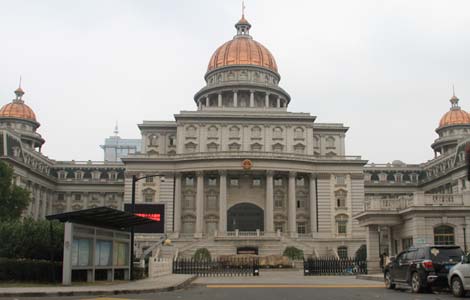
Starting next year, about 800 companies in Shenzhen will have to pay for the right to emit carbon or face severe punishments when they use up their emission quotas.
One of seven test zones appointed by the central government in October, Shenzhen announced on Sept 19 that its system for trading carbon emission rights will start operating in 2013, which will help the city to reduce, by the end of 2015, its carbon emission intensity by 21 percent below what it was in 2010.
The six other test places include China's four municipalities - Beijing, Shanghai, Tianjin and Chongqing - and two provinces, Hubei and Guangdong.
Wu Delin, deputy secretary-general of the Shenzhen government, said about 800 companies have been put into the system and they were the source of about 54 percent of the city's total carbon emissions in 2010.
The new participants in the system include all of the city's power companies and those in another 25 industries, according to Wu, adding that the system will be expanded to include more companies.
Under the new arrangement, the quotas assigned to companies will cost nothing in the beginning.
"It's the companies' social responsibility to reduce carbon emissions, which could be achieved with the use of new technologies," Wu said.
"The move could help the companies become stronger competitors and, once the situation has improved, they could trade their surplus quotas for money."
Companies' efforts to invest more in the less-developed western part of China and reduce carbon emissions there could be offset by roughly equal amounts of carbon emissions released in Shenzhen, Wu told reporters.
The punishment for violators has not been specified yet, Wu said.
The quotas are to be assigned according to an index of emissions intensity, or the ratio of carbon dioxide emissions to GDP, Wu explained.







